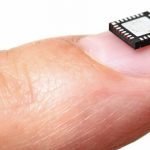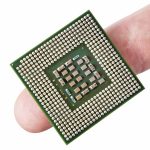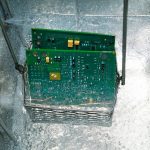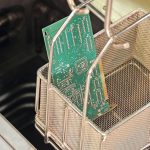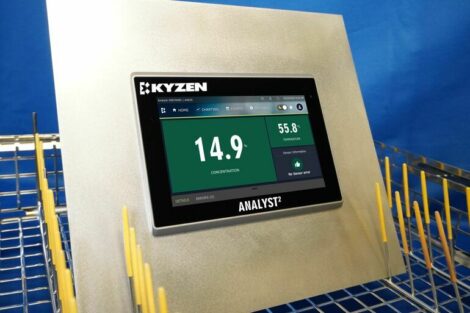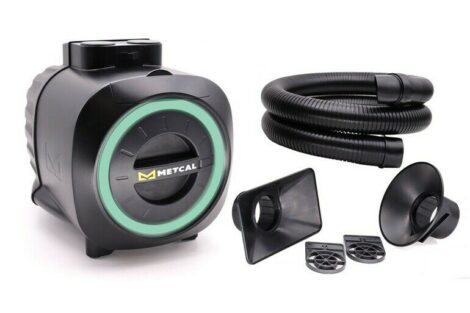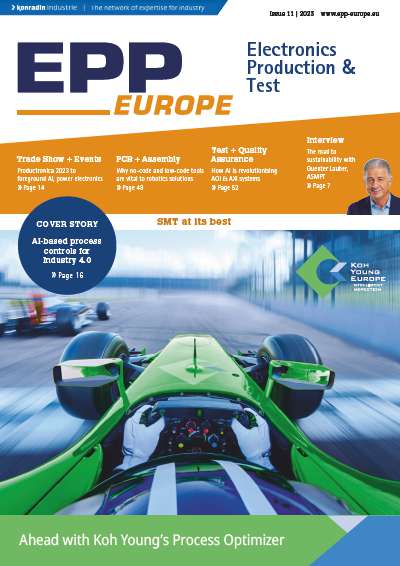Advanced circuitry forms the backbone to miniaturized electronic components. PCBs now run hotter, are smaller, and more complex. This brings with it increased complications when manufacturing. To perform as they should, these intricate assemblies must be precision cleaned. This, however, can be a difficult process when including factors like hard to clean residues from ‘no-clean’ flux formulations, or the changing environmental restrictions and workplace safety rules being placed on companies today.
Miniaturization – smaller circuitry, bigger cleaning challenge
The growing demand for smaller electronics is forcing manufacturers to pack more components into tighter spaces. Miniaturization causes a greater likelihood for weak solder joints, bridging, dendrite growth and all the other well-known soldering faults. Denser spacing also makes traditional cleaning a more challenging task. This puts pressure on PCB manufacturers to find and adopt a cleaning protocol that’s affordable, effective and flexible. Not only do they have to consider what cleaning process will work, but also need to find one that can be adapted as PCB technology continues to evolve.
Many small-component PCBs are assembled today with no-clean solder pastes. Although no-clean flux formulations are intended to remain on the board with minimal residues, those residues still are capable of attracting moisture, inhibiting conformal coating bonding, or simply being aesthetically unacceptable. Plus, there are more residues and contaminants on modern boards than just fluxes which must be addressed. ‘No-clean’ fluxes were supposed to ease the requirement to clean, however, despite the advent of no-clean soldering, experts estimate that more than 50 % of all companies today are still cleaning their PCBs. The irony of no-clean fluxes is not just that PCBs still need to be cleaned to perform correctly; but that the residue left behind is extremely difficult to remove making the cleaning process even more complex.
‘No-clean’ means ‘clean’ in modern PCBs
‘No-clean’ flux was intended to remove the need to clean circuit boards. What was once thought to be an answer to many cleaning challenges in the 1980’s does not stand up to modern electronic circuitry. Cleaning is now a critical process. There are many reasons why cleaning this flux is important on modern boards. Unpredictable performance is a huge motivation. If boards are not cleaned, the risk of contaminate affecting a board’s function is high. For example, if the flux builds up it can interfere with the signal transmission.
If the PCB is to live outside or work in harsh environments, and conformal coating is required, no-clean flux residue can prevent proper adhesion. Flux residue can absorb moisture, so if any further curing process is undertaken, the moisture will be released causing the coating to separate from the board and will inhibit conformal coating uniformity. This results in a failed coating process as moisture and corrosive material would be able to penetrate the assembly. It can then cause corrosion, signal transmission issues, and even complete failure.
Flux residues can also detract from the cosmetic appearance of the boards. This is a major issue for consumer electronics, such as add-on video boards and sound cards. Let’s not forget, often, flux residues make visual QC inspections nearly impossible. In the same way, flux residues can cause automated visual alignment systems to fail, as well as „bed of nails“ test systems.
As PCBs become smaller, more complicated and require a variety of qualification procedures, especially in high-reliability devices, flux residue can make R&D work, like troubleshooting new designs difficult. For this reason, it’s important to determine cleaning issues in the design stage, and decide on which flux and paste to use. If cleanliness is critically important, for example within medical devices, choose a paste that can be easily removed, this will help during the manufacturing process.
What’s the best cleaning method?
It’s important to remember it is not just the soldering process and no-clean flux residue that can affect a PCB’s performance. There are other stages in assembly; inspection, testing, storage and handling, all of which add to the issue of contamination. Adhesives, fingerprints, particulate, marking inks, epoxies and other materials also need to be removed for successful circuitry. So how to choose the correct cleaning method? The rule is to understand the contamination being removed and match this to the cleaning process. Think about what contamination needs to be removed, is it general debris or does it include the removal of difficult to clean flux.
There is an array of new flux chemistries that keep coming to market. This makes finding the right cleaning process complex. Not only is it important to find a solution that works quickly and effectively enough to clean even the most difficult to remove fluxes and contamination, but there are also the usual technical concerns of through-put, floor space and financial implications to consider.
Attention must also be given to conflicting regulations pushing companies in different directions: worker safety, waste disposal, global warming, volatile organics, halogens, recycling and more.
The answer lies within modern precision cleaning fluids. They have been developed to answer all concerns; they are an effective and affordable cleaning choice. When used in a well-designed, tightly-constructed vapor degreaser, they require minimal oversight or management. The high density, low viscosity and low surface tension of the cleaning fluids allow them to clean miniaturized PCBs successfully even under the tightest stand-offs and smallest spaces.
They can also be customized by blending two or more components, which when mixed together clean well and embrace all the ‘appropriate’ benefits required for cleaning. This makes cleaning processes simpler, safer and more reliable. They also provide lower toxicity ratings and better environmental profiles.
Advanced chemistries ‘future-proof’ electronics
Highly advanced cleaning fluid manufacturers now have products that are completely ozone-safe and meet, for example, the EU’s rules of Registration, Evaluation, Authorization and Restriction of Chemicals (REACH) requirements. These innovative new cleaning fluids are not only gentle on the planet but also deliver consistent and reliable cleaning, even on difficult to remove ‘no-clean’ fluxes and other solder pastes.
One solution that has proven to work well and has the power to clean difficult to remove contaminant, like no-clean flux, is a circuit cleaner based on ultra-pure siloxanes. This easily removes cured silicone conformal coatings and silicone adhesives, and works well on fluxes, pastes, organic residues, ionics, silicone-based conformal coatings, adhesives, grease and oils. What makes these innovative cleaning chemistries even more impressive is that they also have ‘green credentials’ with a low VOC formula, which is ozone-friendly and complies with many regulations including RoHS and REACH.
New flux and paste formulations have an important role in today’s electronics assembly. In turn, modern, non-flammable, environmentally-progressive precision cleaning can make a substantial and relatively inexpensive enhancement to the performance, reliability and longevity of miniature electronic devices.
As the continued demand for high-reliability miniaturized electronic components continues to grow, the need for critical cleaning becomes even more important. This means implementing cleaning fluids and methods that possess all the essential cleaning capabilities for smaller, more tightly packed PCBs, but also address worker safety, regulatory requirements and environmental concerns. Before selecting a cleaning solution, consult with a cleaning fluid manufacturer who has the knowledge, experience and expertise to offer the best cleaning resolution depending on specific requirements.
Zusammenfassung Résumé Zusammenfassung russisch
Da die Nachfrage nach hochzuverlässigen miniaturisierten elektronischen Bauteilen weiter steigt, wird die Notwendigkeit einer kritischen Reinigung noch wichtiger. Dies bedeutet die Verwendung von passenden Reinigungsflüssigkeiten und -verfahren, aber auch die Berücksichtigung von Arbeitssicherheit, regulatorische Anforderungen und Umweltbelange.
Comme la demande de composants électroniques miniaturisés continue d’augmenter, le besoin de nettoyage devient encore plus important. Cela implique l‘utilisation de fluides et de procédures de nettoyage approprié, mais également la prise en compte de la sécurité du travail, les exigences réglementaires et les préoccupations environnementales.
Так как спрос на высоконадежные миниатюризированные электронные компоненты продолжает расти, то необходимость критичной очистки становится ещё важнее. Это означает использование подходящих очищающих жидкостей и методов очистки, а также учет безопасности работы, требований законодательства и защиты окружающей среды.


